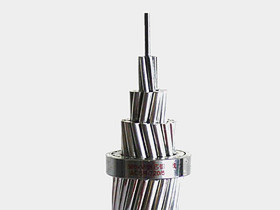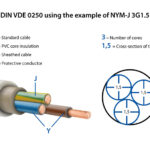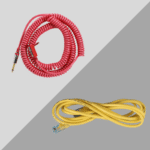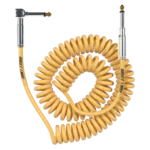When it comes to overhead power transmission, one term you’ll frequently encounter is ACSR cable. But what is ACSR cable, and why is it so widely used in power distribution systems around the world?
In this article, we’ll answer that question in detail and explore the structure, advantages, applications, and specifications of ACSR conductors.
 What is ACSR Cable?
What is ACSR Cable?
ACSR stands for Aluminum Conductor Steel Reinforced. It is a high-capacity, high-strength stranded conductor used in overhead power lines. The conductor consists of a central core of steel strands, which provides mechanical strength, surrounded by one or more layers of hard-drawn aluminum strands, which carry the electrical current.
This combination makes ACSR cable an ideal choice for long-distance, high-voltage power transmission lines, particularly where high tensile strength is required.
Keyword Focus: what is acsr cable, acsr conductor, aluminum conductor steel reinforced
 Construction of ACSR Cable
Construction of ACSR Cable
A typical ACSR cable has:
Steel core: For tensile strength and mechanical support.
Aluminum strands: For electrical conductivity.
Optional galvanization: The steel core may be galvanized to protect against corrosion.
The ratio of aluminum to steel can vary based on the application—for example, ACSR Dog, ACSR Moose, and ACSR Rabbit are common types named by code, each having different strand combinations and sizes.
 ACSR Cable Features & Advantages
ACSR Cable Features & Advantages
High strength-to-weight ratio
Excellent conductivity
Resistant to corrosion (with galvanized core)
Ideal for long-span transmission lines
Cost-effective for overhead lines
Wide range of configurations (e.g., Dog, Moose, Panther types)
Related Keywords: acsr cable specification, acsr cable features, acsr cable types, advantages of acsr cable
 Applications of ACSR Cable
Applications of ACSR Cable
ACSR conductors are widely used in:
Overhead high voltage transmission lines
Medium and low voltage distribution systems
Rural electrification
Coastal and industrial zones (with anti-corrosion protection)
Electrical infrastructure upgrades and grid expansion
Their ability to withstand mechanical stress and environmental conditions makes ACSR cables suitable for various terrains and climates.
 Common ACSR Cable Sizes and Standards
Common ACSR Cable Sizes and Standards
ACSR cables come in a variety of standard sizes and strand combinations. Popular international standards include:
ASTM B232 / B232M
IEC 61089
BS 215 Part 2
Common ACSR conductor types include:
ACSR Dog Conductor – Widely used in distribution
ACSR Moose Conductor – For EHV (extra-high voltage) transmission
ACSR Rabbit Conductor – Suitable for rural and light industrial lines
Related Keywords: acsr conductor sizes, acsr cable specification pdf, acsr cable standard, acsr conductor price
 Where to Buy ACSR Cable?
Where to Buy ACSR Cable?
TOT Cable is a trusted ACSR cable supplier and manufacturer, offering a wide range of ACSR conductors tailored for global standards and regional grid requirements. We provide:
Custom strand configurations
High-quality aluminum and galvanized steel
Export-ready packaging
Competitive pricing for bulk orders

Related Keywords: acsr cable manufacturer, acsr cable suppliers, acsr conductor factory, bulk acsr cable
 Conclusion: Why ACSR Cable Matters
Conclusion: Why ACSR Cable Matters
So, what is ACSR cable? It’s a specialized conductor combining aluminum’s conductivity with steel’s strength, making it the preferred choice for overhead power lines worldwide. Its cost-effectiveness, reliability, and adaptability to tough environments make ACSR a cornerstone of modern electrical infrastructure.
Whether you’re planning a new transmission line or upgrading existing ones, ACSR cable is a smart, proven solution.

 What is ACSR Cable?
What is ACSR Cable?
 Construction of ACSR Cable
Construction of ACSR Cable ACSR Cable Features & Advantages
ACSR Cable Features & Advantages High strength-to-weight ratio
High strength-to-weight ratio Applications of ACSR Cable
Applications of ACSR Cable Common ACSR Cable Sizes and Standards
Common ACSR Cable Sizes and Standards Where to Buy ACSR Cable?
Where to Buy ACSR Cable? Conclusion: Why ACSR Cable Matters
Conclusion: Why ACSR Cable Matters




1 comment
SEO Best Services 07/30/2025
Pretty section of content. I just stumbled upon your site and in accession capital to assert that I acquire actually enjoyed account your blog posts. Any way I will be subscribing to your augment and even I achievement you access consistently quickly.